The Aerospace History Blog - Page 11

Post 051
Ernst Heinkel’s Villa
The port city of Warnemunde on the Baltic coast can be reached from
Berlin in less than three hours. This is where Ernst Heinkel founded
his aircraft factory and lived with his family in a villa overlooking the
sea.
The building still stands today. It is not noticed by tourists. Today, an
institute dealing with marine and weather research has its offices
there. For several years I had tried in vain to get permission to visit the
villa from the inside. Then there was a construction site there for two
years. Finally I got an appointment for a visit.
The friendly director of the institute showed me around. Unfortunately,
the entire interior of the villa had been converted into new offices
during the construction work. The old floor plan no longer existed.
Only the manager's office remained unchanged - it used to be Ernst
Heinkel's office as well. But all the old furniture had been removed.
The exterior of the villa must not be changed. Standing on the balcony
with the manager, I remembered Hans von Ohain telling me that he
had stood on this balcony with Ernst Heinkel after he had told Heinkel
about his project for a jet engine. Heinkel turned to him and asked
quietly, "You mean this will really work?"
Von Ohain was a frequent guest at the Heinkel mansion and praised
the cake that was served there in the small garden behind the house.

Posted by Uwe W. Jack
The villa of Ernst Heinkel at Warnemunde
near the city of Rostock at the Baltic coast.
The Heinkel villa at Strandstrasse 15a in Warnemunde seen from east. The front windows
facing the Baltic sea. The beach is about 100 meters away. The balcony in the second
floor is clearly visible.
(click to enlarge - the file may not be modified - commercial use is prohibited.)

Post 052
The incendiary bomb under the pear tree
My great-grandparents bought a small weekend plot on the outskirts
of Berlin, at Mariendorf, after the First World War. This enabled them
to survive during the famine in Germany. My grandparents took over
the property after World War II. As a boy, I spent many weeks out
there in the summer, climbing a large pear tree. There I would sit on
a branch on a pillow and read adventure novels.
Years later, the pear tree had to be cut down. Under its roots I found
half an incendiary bomb. The British Mark IV had probably landed
there during a night attack. In the winter of 1943/1944, the area had
been bombed, although no factory was to be found far and wide.

Posted by Uwe W. Jack

The lower part of an british Mark IV incendiary bomb. The red paint of the iron weight is
still clearly visible.
(click to enlarge - the file may not be modified - commercial use is prohibited.)
The iron weight was intended to pierce the roofs of houses
to start fires in the middle of the building.
The width from edge to edge is 41 mm, the length is 45 mm.
(click to enlarge - the file may not be modified - commercial
use is prohibited.)
The inner tube with the fire charge has an outer diameter
of 25 mm and inner diameter of 19 mm.
(click to enlarge - the file may not be modified -
commercial use is prohibited.)
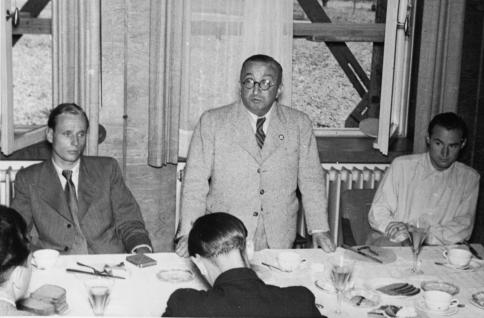
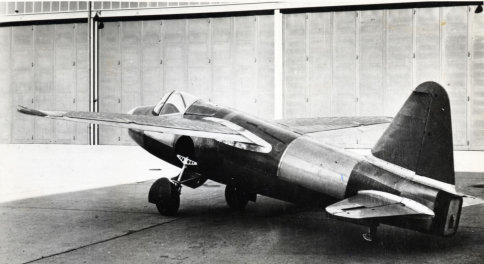
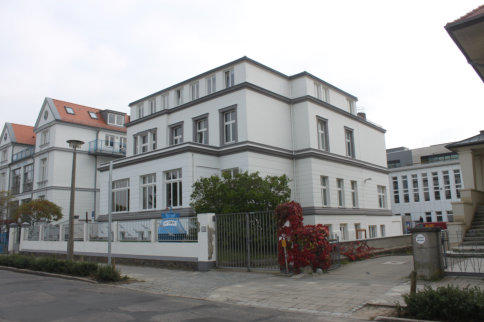


The Heinkel villa seen from west. Behind the house there had been a small garden.
Ernst Heinkel (in the center) gives a speech on the occasion of the first flight of a jet-
powered aircraft (He 178) on August 27, 1939. Seated on the left is the test pilot for the
flight, Erich Warsitz, and on the right the inventor of the jet engine, Hans Joachim Pabst
von Ohain. Von Ohain's aversion to bourgeois clothing is clearly visible.
The event took place in the casino of the Rostock-Marienehe airfield, where the He 178
had flown.
The world’s first jet powered aircraft, the Heinkel He 178.





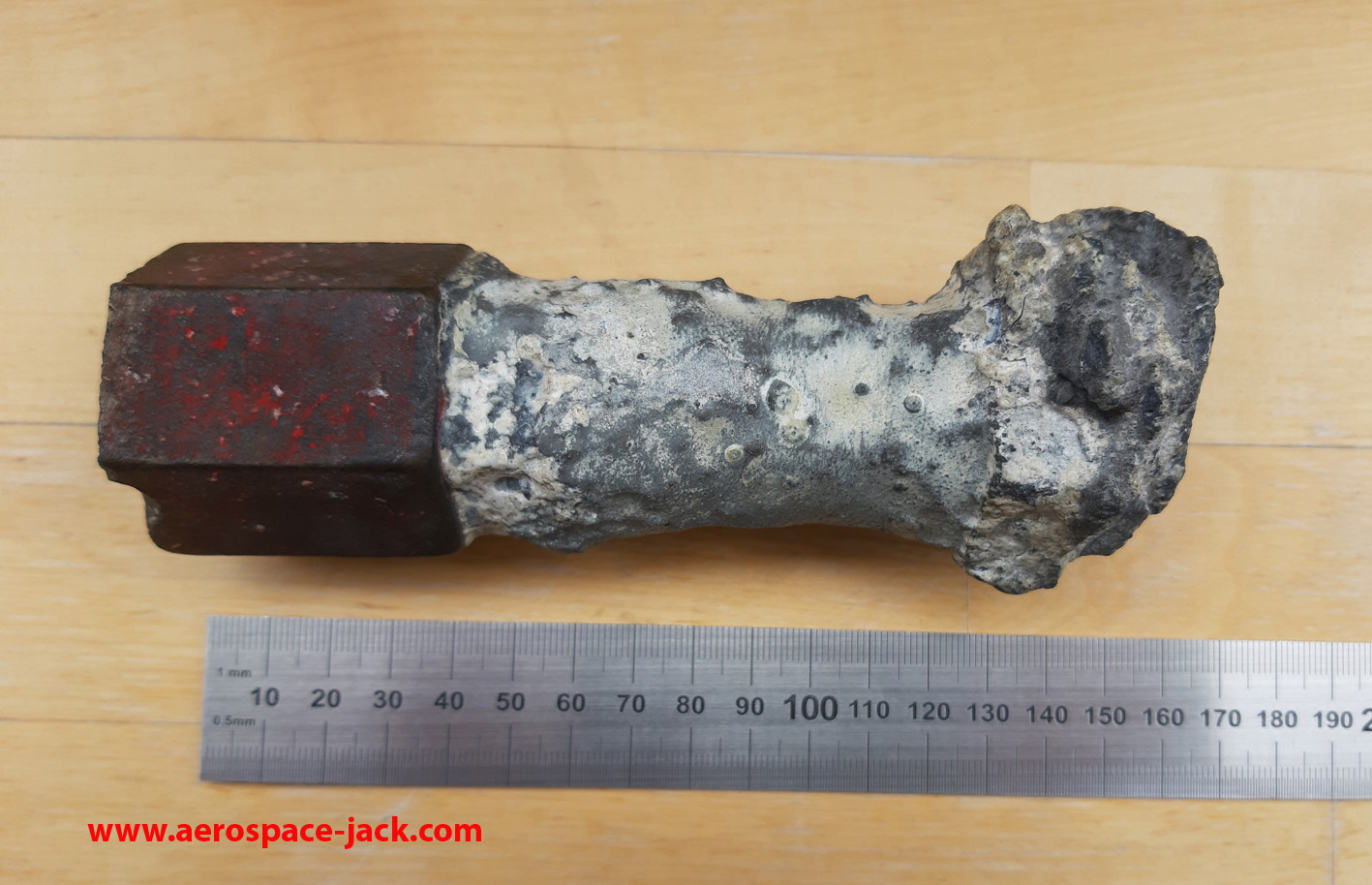

The document shows the internal structure of the
incendiary bomb.
(click to enlarge)

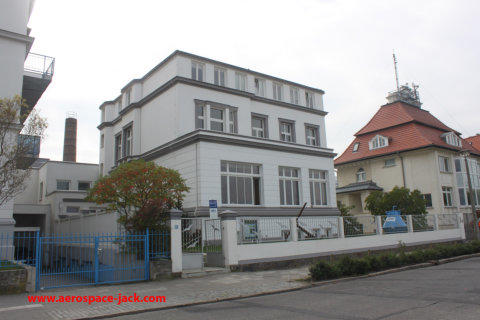
Post 053
A Messerschmitt with a Parasol
Blog post 014 featured a special Messerschmitt Bf 109 that had
mounts for a parasol on the fuselage. I received questions about
this Luftwaffe parasol. The historian Heinz J. Nowarra had
donated some photos of Luftwaffe aircraft with an umbrella to me
years ago.
These are Messerschmitt Bf 109 G-6 of the 8th Staffel of
Jagdgeschwader JG 1. In the summer of 1943, the unit was
stationed in the Netherlands, in Leeuwarden. The pilot of the
aircraft "black 8" with the lettering "Benjamin" has a parasol over
the open cockpit. However, this Bf 109 lacks the attachments for
the parasol as seen in blog post 014. So a gust of wind could blow
the parasol away here. It is also interesting to note in the photos
that the Messerschmitt's tyres are covered to protect it from the
hot sun.

Posted by Uwe W. Jack

A Luftwaffe crew member of Jagdgeschwader JG 1
protected by a parasol is walking along the taxiway at
Leeuwarden. Bf 109 G-6 “black 5” is in the foreground,
“black 8” is in the background.
(click to enlarge - the file may not be modified - commercial
use is prohibited.)
The Pilot is fully dressed up with a life west. Not the ideal
clothing in the hot summer sun.
(click to enlarge - the file may not be modified - commercial
use is prohibited.)
The lettering “Benjamin” could be the first name of the
pilot - or in German, this could be an indication that this
pilot is the youngest in the Staffel.
(click to enlarge - the file may not be modified -
commercial use is prohibited.)
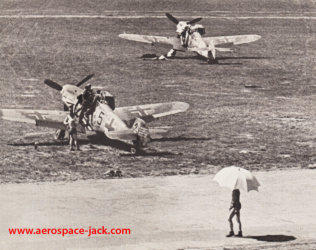
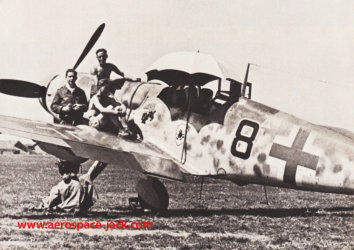

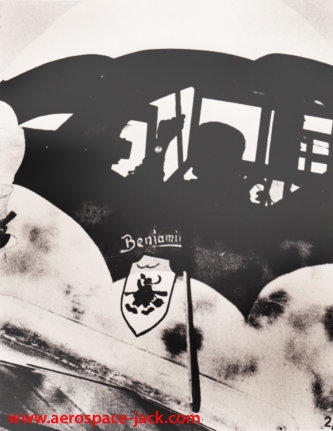
While the pilot sits in the cockpit under a sun shade, his
comrades relax near the aircraft’s engine.
(click to enlarge - the file may not be modified - commercial
use is prohibited.)










